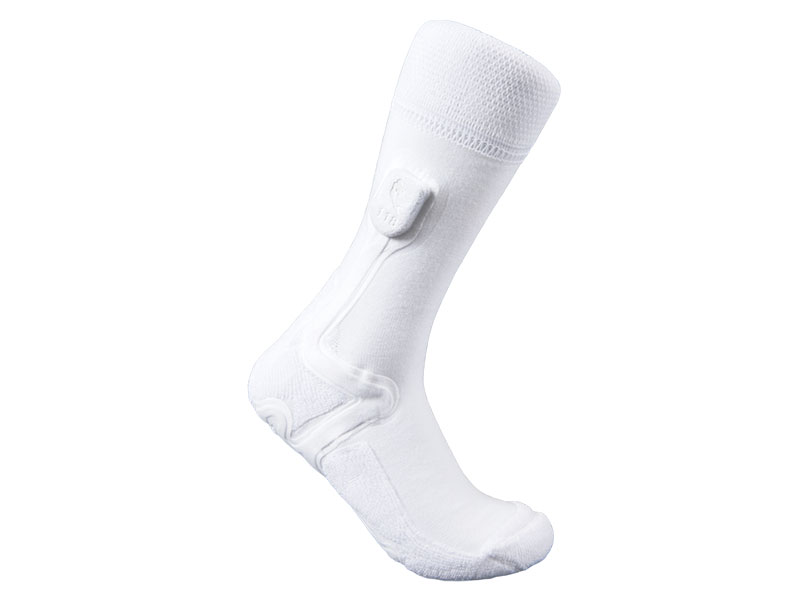Amputations due to diabetes appear to be on the rise. The rate of lower-limb amputations increased by 50% between 2009 and 2015, according to a study published by the by The American Journal of Managed Care. In the United States, every 17 seconds someone is diagnosed with diabetes, and everyday 230 Americans with diabetes will suffer an amputation.
May people living with diabetes lose sensation on their feet due to nerve damage – a condition known as diabetic neuropathy.
Inflammation is one of the first signs of an ulcer, which can be recognized early by identifying increased temperature to localized areas on the feet.
Siren Socks are designed to improve patient outcomes related to diabetic foot ulcers and other diabetes complications. Siren’s Diabetic Socks continuously monitor foot temperature, so people can look for signs of inflammation, a precursor to foot ulcers.
Recognizing Inflammation Promptly
This wearable device is embedded with micro-sensors that recognize temperature changes in the feet, offering rapid detection of inflammation and injury. Through Siren’s unique RPM platform, trained nurses can swiftly coordinate care with the patient’s doctor, improving the outcomes for many suffering from diabetic foot complications, reports Siren.

Patients wear their Siren Socks daily, which measure foot temperature at six locations to determine if inflammation occurs. When foot temperature goes up, this indicates early signs of inflammation and a licensed nurse calls the patient to check on any symptoms and maybe ask for photos. This is a crucial tool in ensuring patients with neuropathy receive guidance at the first signs of an ulcer—before it leads to more serious complications or amputation.
Siren’s Neurofabric
Siren’s Neurofabric is the first textile with microsensors woven directly into the fabric. These virtually invisible sensors are seamlessly integrated into the socks to monitor temperature changes on the bottom of the feet.
Related Smart Socks Help Prevent Patient Falls
Clinical Results of Siren Socks
According to a study conducted by Dr. David G. Armstrong, professor of clinical surgery at Keck School of Medicine of USC, “skin temperature monitoring reduces the risk for diabetic foot ulceration in high-risk patients”.












